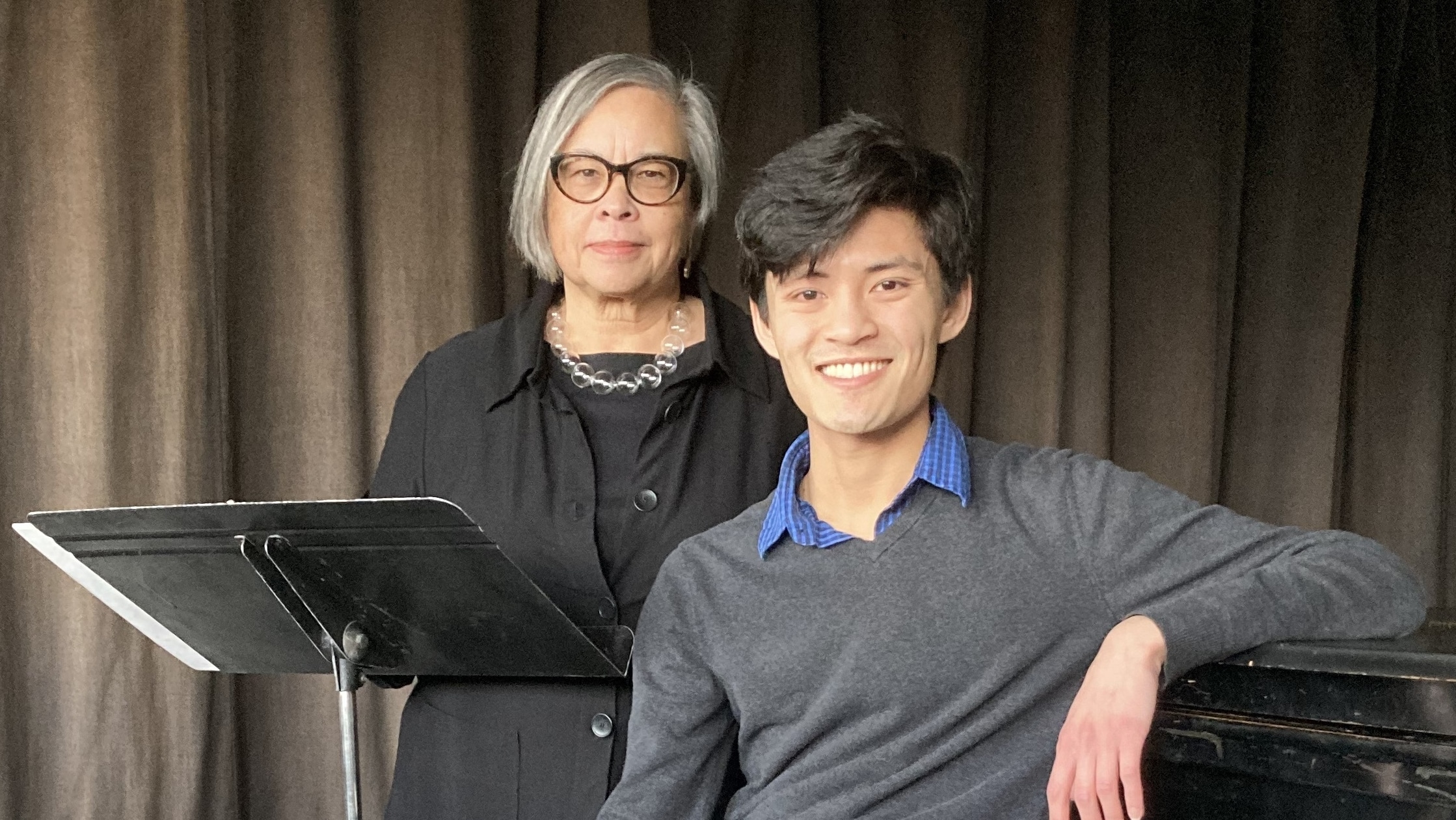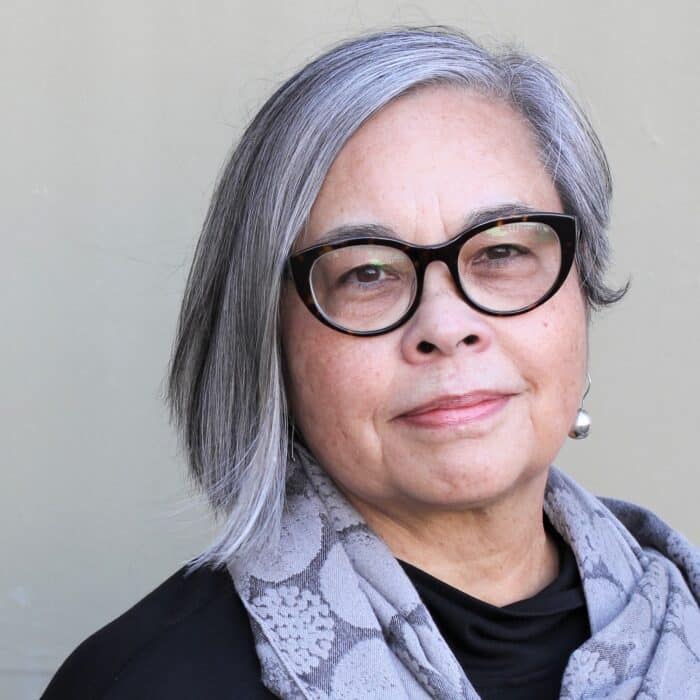Enter to Win $1,000
By taking our brief survey and helping us bring the best of Bothell to you.

On May 7, Haynes’ Hall at McMenamins Anderson School will come alive with Currents—an original operetta by AC Petersen and composer Jeremy Berdin. This moving production invites audiences into an emotional, imaginative story rooted in the Japanese American experience during World War II.
Somewhere between a musical and a traditional opera, Currents is approachable, heartfelt, and entirely in English—with on-screen captions and ASL interpretations to make the performance accessible to all.
Each song paints its own vivid scene, blending music and narrative to capture how it might have felt to live through the heartbreak, dislocation, and resilience of that time—not as a history lesson, but as a deeply personal reflection.
We recently spoke with AC Petersen to learn more about the inspiration behind Currents, her creative process, and what makes Bothell the perfect place to bring this moving project to life.

“The idea for an operetta came from learning about school girls in Japan during World War II who are forced to work making these giant hot air balloons, which the Japanese government attached bombs to and sent in the air current out to the west coast. Most of them didn’t do any damage because the U.S. kept them secret. After WW2, much later, a family was curious and found one and, unfortunately, they were killed.
I wanted to kind of compare the stories of being trapped in WW2. In this case, the daughter of one of the Japanese-Americans was sent over to Japan before WW2 and then she was trapped there. This is my fiction. This is me taking creative liberty.
It was the case for generations that Japanese Americans on the West Coast would send their children one at a time over to Japan to get an education, to learn the ways, and then they usually came back to the U.S.
In [Currents], the daughter did not. She came back eventually at the end of the opera (spoiler alert!). Mrs. Nakata (the main character) and her second daughter are incarcerated in the Minidoka in Idaho (one of the U.S. government’s incarceration camps for Japanese Americans during WW2).
I added a third character inspired by a book I read called Rising Son. It’s a true story of a Japanese American man who was in the U.S. Army and in the military intelligence service which was kept secret—no one knew what they were doing, but they were embedded in the U.S. Forces because they were bilingual. They could speak both Japanese and English and their job was to interrogate the Japanese prisoners and get information.”
“I started by writing the libretto (the lyrics) to maybe 2 or 3 songs— I didn’t have a composer yet. There was a theater salon where writers were encouraged to get up and read just a few minutes of what they have to share with fellow writers.
I had just written lyrics for 2-3 songs, and I just got up and read them without music. That’s where I met Jeremy Berdin—he has studied musical theater. We got together afterward for coffee, and I gave him the printout of a few of the songs and asked if he wanted to pick one to set to music, and he did! I was really impressed with how he captured what I was saying in the music.”
“Choreography is one way of telling a story. I’ve always been inspired by old-fashioned musical theater. I had written a musical that hadn’t been produced and I just wanted to go on to the next thing. This topic seemed more suited to a more spare type of opera than a lavish musical theatre thing. It just sort of evolved.
In my mind, architecture and dance are related in this inverse way. In architecture, you’re creating a 3-dimensional area that people experience as you walk through it. In choreography, you’re working with dancers on the stage and giving them movement. So that’s sort of a similarity.”
“Jeremy and I did a shorter version [of Currents] a year ago to see if it was going in the direction it was going to go and it was! We wanted to expand it further. It takes rehearsal space, it takes paying the artists. And so when I saw this opportunity to apply for a grant from the City of Bothell, I thought it would be really great because we could restage [Currents] and edit some of the songs. In this iteration, there’s one new character, which is the brother, the U.S. Army soldier who’s in the M.I.S. and there’s another song for one of the daughters. So it’s been really great because we’ve been able to add to it.”
“When I was in dance and was performing in works by other choreographers, I worked with a choreographer at Bellevue College by the name of Pat Graney. It was the first time that I had realized that you could make up your own vocabulary in a dance piece. Up until then, I had been taking dance classes and you do certain types of movements… and here was someone who was doing what was called “pedestrian movement”—walking, leaning over, picking something up, even speaking. All of a sudden it occurred to me that you didn’t have to adhere to certain vocabularies that you learned in a certain class or that came down through history. You could just do your own thing.
Even though that was dance, that was kind of a big moment when I started choreographing and doing different types of movement.”
“I mean one of the things [I enjoy] is just The Park at Bothell Landing. I also like coffee shops and bakeries—Hillcrest Bakery and T55 Patisserie. Hillcrest is great— they have dark rye on Fridays.
I think Willard Art and Frame is a really great place for visual arts. They have a lot of classes like bookbinding and printmaking.
I always recommend folks come to Bothell City Hall to see whatever art exhibit is in the lobby. I usually combine it with the Bothell Art Walk. ”
“I wanted a place that was close to Downtown Bothell or within the core of Bothell. My grant didn’t cover rental of a performance space and it’s really tough to find that. I’d been to a history lecture there and I thought it would be really great if we could partner on this, so that’s what it is—a really great partnership.
It’s right up the street and it’s a flexible space. They’ll be putting a raised stage in. I can project the lyrics on the back screen. They can take RSVPs— it’s at no cost, but people should register so they know how many chairs to set up.
I’ve also booked ASL interpretation, so hopefully, the deaf and hard-of-hearing community can come out and enjoy it as well.
Then, there’s the panel afterward, which I’m really excited about. Gail Nomura, Associate Professor Emerita of American Ethnic Studies at the University of Washington, will be moderating. One of the panel participants was 12 years old when he was incarcerated in Heart Mountain. He’s 96 and he loves to talk about it.”
“I’m still working on the final casting—that’s not unique to this project. This is the situation even if you’re a big theatre company with a huge budget with lots of folks auditioning. It’s always a challenge to schedule people because people have jobs and lives. That’s just part of it, so we’re all used to that. I’m excited that we have the cast that we do. ”
Follow us on Instagram or subscribe to our newsletter for trip ideas, upcoming events, special offers, and more.
Cookies are small text files that websites place on the computers and mobile devices of people who visit those websites.
READ MOREBy taking our brief survey and helping us bring the best of Bothell to you.
